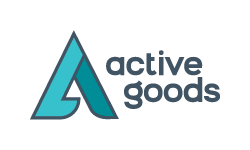3 Exercises That Will Strengthen Your Core At The Office.
This is the solution to lower back pain while sitting all day. Your core refers to the entire 360 degrees from belly button all around back to belly button. While sitting up straight at your desk induces improved posture from a hunched position, your pelvis is now set on an anterior tilt putting your lumbar spine into extension. Co-contraction refers to the activation of your anterior as well as posterior muscles, in this case, within your core. Without the support of your transverse abdominis (TVA) all the tension will rest in your erector spinae (lower back) causing stiffness and discomfort.
The TVA resides beneath your rectus abdominis, commonly referred to as the six-pack. The rectus abdominis’ role is spinal flexion and is therefore inutile when it comes to upper body support. Your TVA however is meant for structural integrity when maintaining a static position. The most popular example would be a plank. That is not to say that the TVA is solely active when you are immobile. When performing compound movements such as a squat or pull-up, your TVA provides rigidity and structure to your body protecting your spine from injury.
Like any muscle, in order to get stronger it must be worked. It is a dense, slow twitch muscle and will therefore respond best to low intensity high repetition training. The following are exercises used exclusively to strengthen your TVA but remember, it is to remain engaged all day while sitting, standing, walking, squatting, I could go on. Keep your core engaged!
1) Dead Bugs
Lying on your back put your knees above your hips so your femur is 90 degrees from your body and your shins are 90 degrees from your femur (parallel to the floor). Your arms will point straight up to be perpendicular to the floor. Before commencing, crush your lumbar spine to the floor until you make contact. DO NOT LOSE CONTACT. Practice inhaling into your diaphragm (your belly). Your core is now active.
While maintaining contact with the floor with your lumbar spine, hinge at the shoulder to bring your straight arm to the floor while simultaneously hinging your femur at the hip to bring the opposing leg to the floor (the other two limps remain where they are). Then bring your limbs back to the starting position and repeat for the other limbs.
(Image Iain Bain - Dead Bug)
2) Bird Dogs
This is similar to the dead bug however a little balance is required. On your hands and knees, reengage your core as you did with the dead bugs. Your back should be table-top flat and your belly button is now sucked in. Once again you will extend opposing limbs while balancing on the stationary limbs (left arm with right leg and vice versa). Keep your breathing in your belly and maintain a level and flat back.

(Image Iain Bain - Bird Dogs)
3) Planks
On your forearms and toes, support your body above the ground. Keep your shoulders above your elbows and your hips at the same height so that your body is one solid piece from shoulder to heel (no bend in the body). Hold this position for as long as you can breathing into your diaphragm slow and deep. Your scapulae (shoulder blades) should be retracted and depressed as well in order to prevent tension from resting in your trapezius.

(Image Iain Bain - Plank)
Source: Ian Bain, https://www.linkedin.com/in/editorbain


